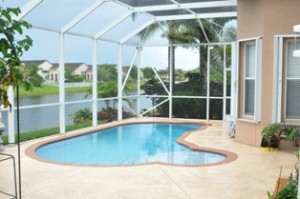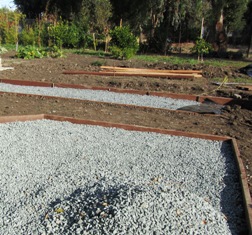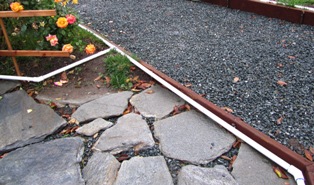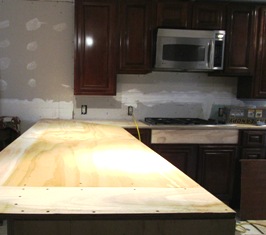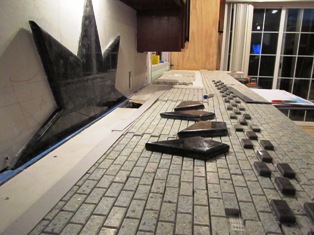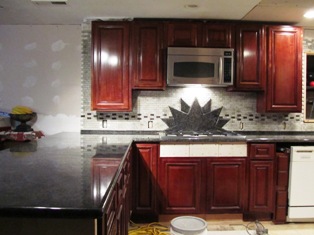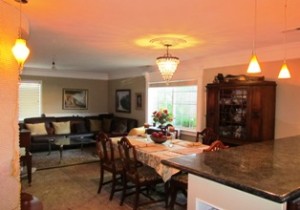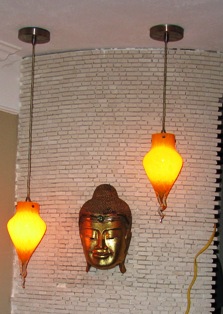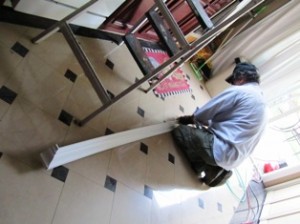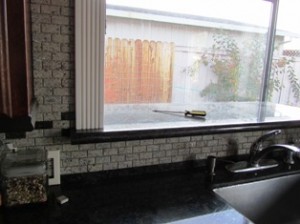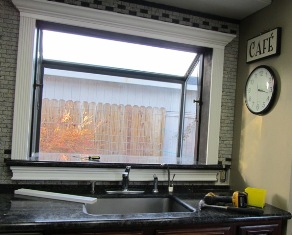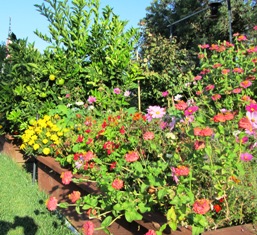Archive for the 'Renovation and Construction' Category
Plants for Sun Rooms, Solariums, and Conservatories
My husband and I grew exotic flowers in and around our Miami, Florida home. We had a sun room that sheltered a swimming pool in which I swam laps in every day. The space seemed near perfect for growing orchids in cycles of perpetual bloom. They loved loved the heat, light, and moisture provided by the pool and a fountain we installed. We also had an angel trumpet tree (Datura arborea) in the front of the house, adding drama and a luscious scent to the entry area.
But with the freezing winter temperatures on our Northern California farmette, such plants would not survive unless grown in a conservatory type of room with lots of warmth and light.
Since buying the farmette, my hubby and I have toyed with the idea of building such a space, also known as sun room, greenhouse room, tea room, and solarium.
A major consideration besides money and materials would be the direction the room would face. For our farmhouse, the direction (also known as “aspect”) could be north where the patio is already located or if positioned at the front of the house (where we had planned to create a wraparound front porch), the sun room or conservatory’s aspect would face south.
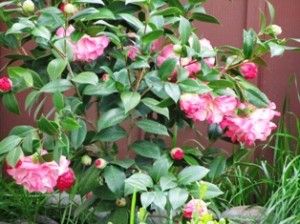
This Camellia japonica produces attractive blooms in early to mid spring and would do well in a cooler sun room
A north-facing aspect permits plenty of light but less heat. In a cooler conservatory or sun room, we’d use more foliage plants such as camellia, begonia, geranium, anthurium, Australian bottle brush, fuchsia, ficus, gardenia, campanula, hypoestes , and various types of ivy and palm. We could also grow Cymbidium orchids that like dappled shade during summer but bloom in the dead of winter.
A south or west direction ensures intense light and heat and would allow us to grow more flowering plants (especially ones found in the subtropics and tropics), including exotic orchids.
My husband grew up on a Caribbean island and loves orchids. The cymbidium orchids do well enough already outside. We put them in protected areas on frosty nights. But many of the exotic orchids require light, heat, and, in some cases, additional moisture.
We know Phalaenopsis, odontoglossum, and slipper orchids would thrive in a conservatory room that faces south or west as would many other plants such as hibiscus, jasmine, nephrolepsis, passion flower, plumeria, and African violet, to name a few. Also, many hybrid rhododendrons that profusely flower for long periods can be grown in containers in a warm environment.
I’m really an outside garden girl, but a conservatory room with a lot of interesting architectural detail and gorgeous blooming plants could make me want to spend more time indoors. It doesn’t matter to me whether it faces north or south. But dare I bring up the idea of adding a pool?
Gravel Paths Lend Elegance to a Garden
Carlos, my husband, and I conceived our garden plan after we moved onto the farmette and realized the limitations of the land. The soil in this east bay valley in many places is compacted clay. Many areas around our farmette needed turning and aerating as well as nutrient amendments. If we wanted to plant fruit trees, berry vines, and flowers of all kinds, especially those attractive to honeybees, we needed good soil everywhere except under the gravel paths.
Putting in gravel paths made economical sense after we decided to build some large boxes for raised beds. Between the boxes, we planted trees. We envisioned the paths running either behind the boxes or in front of them. Our master plan continues to evolve, even as we work on the land–developing it and renovating the farmhouse.
The first step was to prepare the path area. We pulled out weeds, removed rocks, and turned the earth with a rototiller. Then we raked and compacted the soil.
We laid out the rows for the paths and installed pressure-treated wood held in place with spikes to keep the paths where we wanted them. In some cases, we had to build retaining walls. Then, we put down black plastic weed barrier paper, and hauled in the gravel.
Gravel comes in sizes ranging from rice grains all the way up to basketballs. Anything bigger than two feet is considered a boulder. We chose the pea-to-nickel size. We also created gravel walkways alongside the house and we used the same gravel in our large circular driveway.
A gravel path can lend an elegance to a landscaped space. On a trip to the United Kingdom, I visited country houses, castles, and gardens where I found gravel generously used on paths and in driveways. Here on the farmette, I really appreciate not getting my boots and shoes muddy during our Northern California rainy season. Our gravel paths make that possible.
Slow Moving Storms Saturate the Farmette
The meteorologists on Bay Area television warned for a week that a series of slow-moving storms would hit the region in a one, two, three punch. One weather forecaster explained that the cloud cover of the storms stretched from San Francisco to Hawaii. On our Henny Penny Farmette, the storms dropped a lot of water but the septic handled the deluge well.
Over the summer months, we had relocated mounds of earth to strategic areas so the water of these types of winter storms would flow away from the house. A walk around the farmette today convinced me that we did the right thing. Mostly, the water stayed away from the house foundation. Also, the French drain that encircles the perimeter of the house seems to be working well.
Still, the storms that dropped nearly eight inches of rain in the north bay, triggering emergency flash flood warnings for local streams and rivers, also saturated our farmette. Water pooled on some of our gravel paths. The largest reservoir of standing water is in front of the house. That area has been excavated for construction of our wrap-around porch and steps.
After enduring a hot, dry summer, the plants that are wintering over seem to come alive in the rain. In particular, the irises in beds around the farmette are starting to bloom. The French perfume lavender is also sending forth purple flower spikes. Whether it is summer heat cracking the ground or winter rains that saturate and flood it, each season has challenges but also offers gifts. To live in harmony with Mother Nature is be accepting and ever-mindful of the way nature achieves balance.
A Kitchen Created from Gifted and Discarded Materials
Built in 1947, the Henny Penny Farmette cottage didn’t look like a dream home when we first saw it. However, we knew we could make it not only habitable but functional and pretty. There had been a family living there before we purchased the property. They left behind some kitchen cabinets but that was about all.
At one point the house had some pretty hardwood flooring. I know this because I met a neighbor who bought it from the family who lived here. Apparently, most of the interior that wasn’t nailed down was sold or otherwise removed. When we got here, there was no bathroom sink or appliances (unless you count an old refrigerator standing abandoned on the land).
Bathroom and kitchen became construction priorities for us. From a retail marble outlet, we secured permission from the owner to take what we wanted from the store’s dumpster. We found enough discarded marble to create a guest bathroom floor in one color and a master bathroom floor (in two colors). It meant my husband Carlos would have to painstakingly cut the tile, but he was up to it.
We found marble countertops discounted by a supplier in Oakland. We also discovered that the supplier had some pieces in a discard pile (for a fraction of the cost but he would only sell it on Sundays) requiring us to make another trip. We like the “L” shaped counter, but had to cut the holes for the sink and cooktop. Carlos created a beautiful sunburst as the focal area on the wall behind the cooktop.
We discovered a closeout sale on Italian honed marble but had to drive for two hours to Sacramento to get it. The price was great but the speckled marble was rather plain. I asked Carlos to cut some rectangles in the same color as the sunburst and we played around with different patterns finally settling on a simple one.
It has taken almost three years for Carlos and I to finally finish the kitchen (although we haven’t been working on it full-time, there are other tasks around the farmette that must be done, too). We are pleased with the result.
Our refrigerator and dishwasher do not match the other appliances that we have in the kitchen, but they were gifts that we will use until we need to replace them. We got the remainder of the appliances (all stainless steel) at a fire sale price for the lot from a friend going through divorce. But the kitchen is quite functional. Best of all, we did it for a fraction of the cost of a kitchen remodel at today’s prices and in the process kept materials out of landfill.
Let There Be Light–In the Kitchen, At Least
A new project seems to beckon at every turn here on the Henny Penny Farmette. But as we anticipated having our first celebratory meal at Thanksgiving in our farmette kitchen, we decided to make working on the interior of the house a priority. Well, not the whole house. Technically, I mean the kitchen/dining room/living room space. Although it’s the size of a postage stamp, the space affords easy flow.
At roughly 600 square feet, the farmette kitchen/dining room/living room space at times has felt tight, cluttered, and dark. But after we moved out some boxes (yes, still unpacked from two years ago) into a storage shed and thoroughly cleaned the area, the room seemed more expansive. A few days before Thanksgiving, Carlos and I addressed the lighting problems.
We needed light over the long granite counter that separated the kitchen from the dining area. We also had a very dark area at the end of the counter, space that sort of recessed back into an area that we use as extra kitchen storage and wet bar.
Our so-called “art” wall, tiled in stone (the wall is shaped in a half circle), that could use soft illumination. Finally, the living room had no lighting (although at one point, a single naked bulb hung from the ceiling). If we actually wanted to see our guests, that area needed attention.
We picked three areas (foregoing the living room for now, although we do have a plan for it). Four yellow glass pendant lights went in over the counter. Two yellow blown glass pendants were hung near the art wall. A crystal chandelier that hearkened back to the elegant ballrooms of the 20s and 30s was hung above the dining table. With the lighting finished and much to be thankful for, we sat down and enjoyed our Thanksgiving dinner. That was when I noticed the floor…still no flooring. Argh! Like I said, a new project at every turn.
Inviting Nature in through a Kitchen Garden Window
At only 1,000 square feet, our farmhouse, at times, felt claustrophobic to me after we moved here in 2010. I needed windows and lots of light. I wanted hardwood floors and granite countertops. But I also wanted to reuse, recycle, and do the work as inexpensively as possible. My husband Carlos is an architect and I’m his number one (dare I say visionary) helper. Together we’ve done remodels on both coasts, so a little farmhouse should be no problem, right? We had no idea how much work was (and still is) ahead of us.
Fans of network television home improvement shows will tell you that if you ever want to make your money back on a renovation, fix the kitchen and the bathrooms. So, of course, those were high on our list of priorities. Rotting wood and mountains of broken ceramic tile had to be carted away before we could even start our interior work. But we did put in a marble kitchen floor. Carlos laid it out in a pretty pattern. It looks lovely, is easy to keep clean, and feels cool under bare feet in the summer.
Finally, we began to slowly and methodically open up the space. Inside the kitchen, we installed the back splash of Italian honed marble that we bought at a closeout sale. We reused the garden window. For me, windows are a lovely way to link indoor with outdoor space. Framing the window and adding a flourish of crown molding finished it off nicely. Now I can look out on a maple tree, roses, and lavender planted along the fence line when I do dishes. Anchored in front of that window, I incubate my ideas for my books and dream of what renovation project to tackle next.
Boxes To Grow Just about Anything
When we arrived at the Henny Penny Farmette our first summer here, the weeds on the property towered over our heads. We knew it would take a lot of work to change the wild, chaotic landscape into something beautiful. After we pulled more weeds than we ever want to remember, we planted a garden, started a bed of herbs, and (during the following bare root season in late January) put in an orchard. That rainy season we had 21 straight days of rain.
My husband Carlos had left to visit his family in the Dominican Republic. The rains didn’t let up. I feared the septic would overflow, take down the young trees, and destroy our herb beds. Near the end of that rainy period, the water level rose high enough to threaten the door into the house. Then the rain stopped.
When Carlos returned, he hired some workers to help us reconfigure the landscape, move dirt, and create a level backyard. We put in a small lawn and gravel paths that defined the entire space at the back of our property. We also raised one area of the yard where the septic could drain in a different direction than the house if it rained like that again.
Carlos incorporated into the overall landscape design several planting boxes in which to grow our berries as well as flowers. The soil here is heavy clay that turns to concrete in the summer. Planting boxes allows us to control the soil, enriching it with nutrients and compost as needed. The gravel paths enable us to move around the acreage during the rainy season, inspecting the boxes of plants, without getting getting mired in mud. The cost to build each box is about $125.00.
Planting boxes allow us to meet each each plant’s needs, for example, acid-soil for blueberries, or great drainage for roses. I first observed raised beds in massive planting boxes during a trip to Russia in the late 1990s. In a centuries-old village along the Volga, I saw vegetables and herbs flourishing under an apple tree planted in the center of a massive box. Our Henny Penny Farmette planting boxes are 4 ft. by 6 ft., so we wouldn’t grow trees in the boxes. However, we have planted a citrus or fruit tree between the boxes. These raised beds in frames truly make it possible to grow almost anything and create a sense of order out of the wild chaos of nature.
 Facebook
Facebook Goodreads
Goodreads LinkedIn
LinkedIn Meera Lester
Meera Lester Twitter
Twitter




